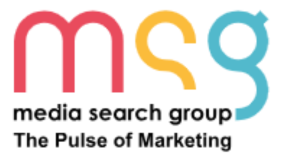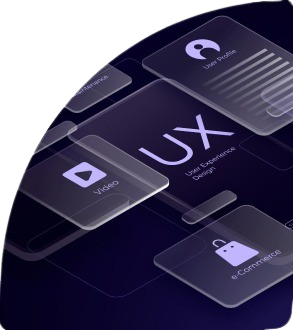Your Website Doesn’t Just Need to Look Good. It Needs to React Intelligently.
Website design isn't just about what looks good anymore, it's about what works. User expectations have changed. They don't just want beautiful websites, they want intuitive, frictionless, personalized experiences.
And when they don't get that?
They bounce.
Conversion rates drop. Engagement craters. And all your design efforts go unnoticed.
Today, success is driven by behavioral insights, micro-interactions, and intelligent design iterations, not just aesthetics. That's why you need more than a design team. You need AI that sees what users feel and acts on it instantly.
Today's leading websites are no longer just "designed", they are engineered by AI to respond, learn, and evolve with every user interaction. At Media Search Group, we bring that intelligence to your UI/UX strategy.
At Media Search Group, we use AI to:
- Analyze heatmaps, scroll depth & click behavior
- Pinpoint usability bottlenecks
- Optimize visual hierarchies dynamically
- Adjust layouts based on engagement patterns
- Suggest and test high-converting design alternatives
Because good design isn't subjective anymore. It's data-backed, AI-optimized, and conversion-focused from the start.
If your UI isn’t converting, your UX isn’t working. Let’s fix that.
AI Isn't Replacing Designers - It's Making Them Unstoppable
What if you could instantly see:
- Where users hesitate before clicking?
- Which CTAs do they miss entirely?
- What layout leads to scroll abandonment?
- Which copy confuses more than it converts?
AI reveals these answers in real-time.
This is not about guesswork, it's about data-backed clarity. Using machine learning and deep interaction analysis, AI provides immediate feedback loops on layout efficiency, click-through behavior, and user journey quality.
Our AI tools don't just surface insights. They prioritize them. So your team can fix what matters, fast.
While traditional A/B tests crawl, AI tests sprint. It identifies patterns, analyzes intent, and provides evidence-based design recommendations that can be implemented faster than any human team working alone.
We don't guess what users want. We watch what they do. And we respond immediately.
Why AI Is the Future of UX/UI Optimization
Great design used to come from intuition. Now, it comes from intelligence.
AI doesn't just guess what users want, it watches them. Learns from them. Then shapes your website experience to match their behavior in real time.
- Instead of A/B testing one layout at a time, AI runs multivariate design tests across audience segments.
- Instead of waiting for feedback, AI reacts to patterns, - rage clicks, drop-offs, missed CTAs -and resolves them.
- Instead of chasing opinions, you follow insights from real user sessions.
AI takes the guesswork out of design and replaces it with high-speed, high-confidence UX evolution.
If your website hasn't been optimized by AI yet, you're designing blind.
Why AI-Based UX/UI Optimization Services Are Crucial Today
AI-Enhanced Heatmap & Interaction Analysis:
Reveal exactly where users focus, what they ignore, and where they drop off, so you can fix it instantly.
Real-Time Micro UX Adjustments:
Dynamically adapt spacing, button placements, and messaging to enhance clarity and click-throughs on the fly.
Behavior-Driven CTA Testing:
Automatically test and refine call-to-actions based on user reactions, scroll depth, and intent signals.
AI-Guided UX Copy Improvements:
NLP tools analyze tone, clarity, and engagement, offering smarter copy suggestions for higher conversions.
Predictive UX Issue Detection:

Spot signs of future usability failures, like rage clicks, repeat backtracking, or fast exits before they damage KPIs.
Continuous UX Monitoring Dashboards:
Live visualizations of how users interact with your UI, with optimization alerts and improvement recommendations delivered automatically.
AI vs. Traditional UX Testing: What's the Real Advantage?
Old-school UX testing means:
- Gathering user feedback manually
- Waiting weeks for design changes
- Relying on hunches, not behavior
AI-powered UX means:
- Instant heatmap and funnel analysis
- Automated design suggestions backed by behavior data
- Live deployment of winning variations without dev delays
AI doesn't just recommend, it learns, tests, and improves your interface while you sleep.
What AI Can Do for UX/UI Optimization
Whether you're running a global e-commerce platform or a local service website, AI tools now make elite UX strategy accessible and scalable:
- Engagement Tracking: Follow how real users navigate, click, scroll, and convert - or don't.
- Design Element Scoring: Identify which visuals, placements, or colors drive the most interaction.
- Form Funnel Optimization: Detect friction points in lead forms and adjust field order, input types, and button behavior.
- Content Flow Mapping: Ensure copy, images, and CTAs appear in a sequence that matches the user's mental model.
- Session Replay Intelligence: Let AI analyze and summarize thousands of session recordings for design insights.
- Dynamic Layout Adjustments: Optimize layout structure based on device type, user journey stage, or engagement signals.
- Conversion Path Analysis: Map the shortest path to conversion and refine it constantly using AI feedback loops.
AI learns from:
- Every mouse move
- Every scroll depth
- Every tap and touch gesture
...and makes thousands of micro-decisions that shape better outcomes.
This isn't just better design. It's behaviorally intelligent design.
How AI Transforms UX/UI from Static to Smart
From Intuition to Intelligence
Designers used to rely on gut instinct. Now they rely on data. AI allows us to analyze behavior at scale - thousands of interactions, millions of micro-decisions - to surface what truly drives conversion, satisfaction, and retention.
We track:
- Scroll patterns
- Hover behaviors
- Click distributions
- Rage click indicators
...to uncover experience gaps you didn't know existed.
From One-Size-Fits-All to One-for-Each
AI dynamically adapts interfaces based on user type, device, referral source, and journey stage. Returning visitors get continuity. First-time users get clarity. Each interaction is tailored, not just visually, but functionally.
This leads to:
- Higher engagement for first-time visits
- Faster navigation for returning customers
- Smarter CTAs based on user behavior history
From Periodic Updates to Continuous Improvement
Redesigns used to happen every few years. Now, with AI in place, your UX evolves daily, guided by behavioral feedback, performance data, and smart algorithms. Our AI systems operate in a loop:
Monitor → Learn → Optimize → Deploy → Repeat
This is optimization on autopilot.
What Our AI UX/UI Optimization Services Deliver
When you work with Media Search Group, you get more than insights. You get a continuously optimized, data-driven user experience:
1. UX Behavior Intelligence Suite
- Heatmaps, scroll maps, click zones - all filtered by device, user type, and time range
- Rage click tracking to expose moments of user frustration
- Session replay aggregation, automatically grouped by behavioral patterns
2. AI-Powered Personalization Engine
- Dynamic content swapping based on real-time and historical behavior
- Layout variations tailored to traffic sources (email, organic, paid, social)
- Smart banners, CTAs, and messages that adapt by funnel stage
3. Smart Microcopy & UI Text Optimization
- NLP-powered suggestions for button text, placeholder copy, and form labels
- Real-time tone analysis for clarity, empathy, urgency, and trust
- Automated testing of multiple variants to find high-performing copy
4. Predictive UX Issue Detection
- Early warnings for unusual interaction patterns
- AI-generated friction scores by page or section
- Automated tagging of UX regressions or inconsistencies
5. Continuous UX A/B/n Testing
- Run dozens of variants simultaneously with real-time traffic allocation
- Automatically detect winning variants and phase out underperformers
- Learn what resonates with each audience segment without bias
6. Conversion Funnel Optimization
- Deep form analytics with field abandonment tracking
- Real-time input behavior (tab backs, corrections, delays)
- Suggestions for layout, question sequence, and field types based on funnel friction
7. Real-Time UX Dashboards & Alerts
- Visual journey maps updated with live data
- Custom alerts for performance drops or user frustration spikes
- Executive-level summaries paired with tactical recommendations
Reasons Why AI-Based UX/UI Optimization is the Real game Changer
UX That Evolves With Every Click
Great user experience isn't built once. It's continuously refined.
With AI, your digital interface becomes a living system. It learns. It adapts. It improves itself based on exactly how real users behave.
So instead of making assumptions about design, we follow evidence.
And instead of quarterly design sprints, you get daily performance lifts without adding more pressure to your internal teams.
Real-Time Optimization, Not Monthly Reports
While traditional UX teams wait for analytics reports and compile months of feedback, our AI agents act now.
With always-on monitoring, they:
- Watch session replays at scale and flag anomalies
- Generate live heatmaps that evolve with each visitor
- Identify rage clicks, repetitive actions, or dead ends in navigation
- Detect drop-off points in key funnels like forms and checkouts
And then, most importantly, they recommend or apply fixes:
- Moving CTAs into high-attention zones
- Rewriting confusing labels or button copy
- Changing visual hierarchy to reduce cognitive load
This is the future of UX: real-time, user-driven, self-improving.
- WordPress, Shopify, Magento, Webflow, and custom CMS
- Heatmap tools like Hotjar and Crazy Egg
- Analytics suites including Google Analytics and Mixpanel
- Session replay platforms like FullStory or Smartlook
Built for Growth Teams, Startups, and Enterprises Alike
Whether you're managing a lean product team or overseeing a global UX operation, our AI systems scale with you. No bloat. No fluff. Just lean, intelligent optimization that grows with your business.
We integrate seamlessly with:
...so there's no disruption, only improvement.
And we work closely with your designers, developers, and product owners to ensure everything aligns with your roadmap, resources, and brand guidelines.

Why Media Search Group for AI-Based UX/UI Optimization?
We're not just AI specialists. We're conversion experts, user behavior analysts, and system integrators. That means every design decision we optimize is grounded in the one metric that matters most: action.
Other agencies talk about delight. We deliver results.
- Faster load times
- Smoother flows
- Cleaner interfaces
- Smarter funnels
- Higher engagement
- Lower abandonment
This is the future of digital product design and you don't have to wait for it.
We Don't Replace Your Team - We Make Them Smarter
AI isn't a substitute for creative vision. It's an amplifier. AI-based UX/UI Optimization ensures your digital experience isn't just functional, it's exceptional, personalized, and proven to perform.
Designers still make aesthetic choices. Copywriters still craft tone. But AI ensures those creative assets are deployed in the smartest possible way, backed by hard behavioral evidence.
Instead of weeks of ideation followed by months of testing, you get near-instant validation.
And because AI tools can analyze the behavior of 10,000 users in the time it takes a team to interview five, your improvements are guided by truth at scale.
Let’s Build Experiences That Learn and Earn
If your website or app isn’t evolving based on how users behave, it’s falling behind.








